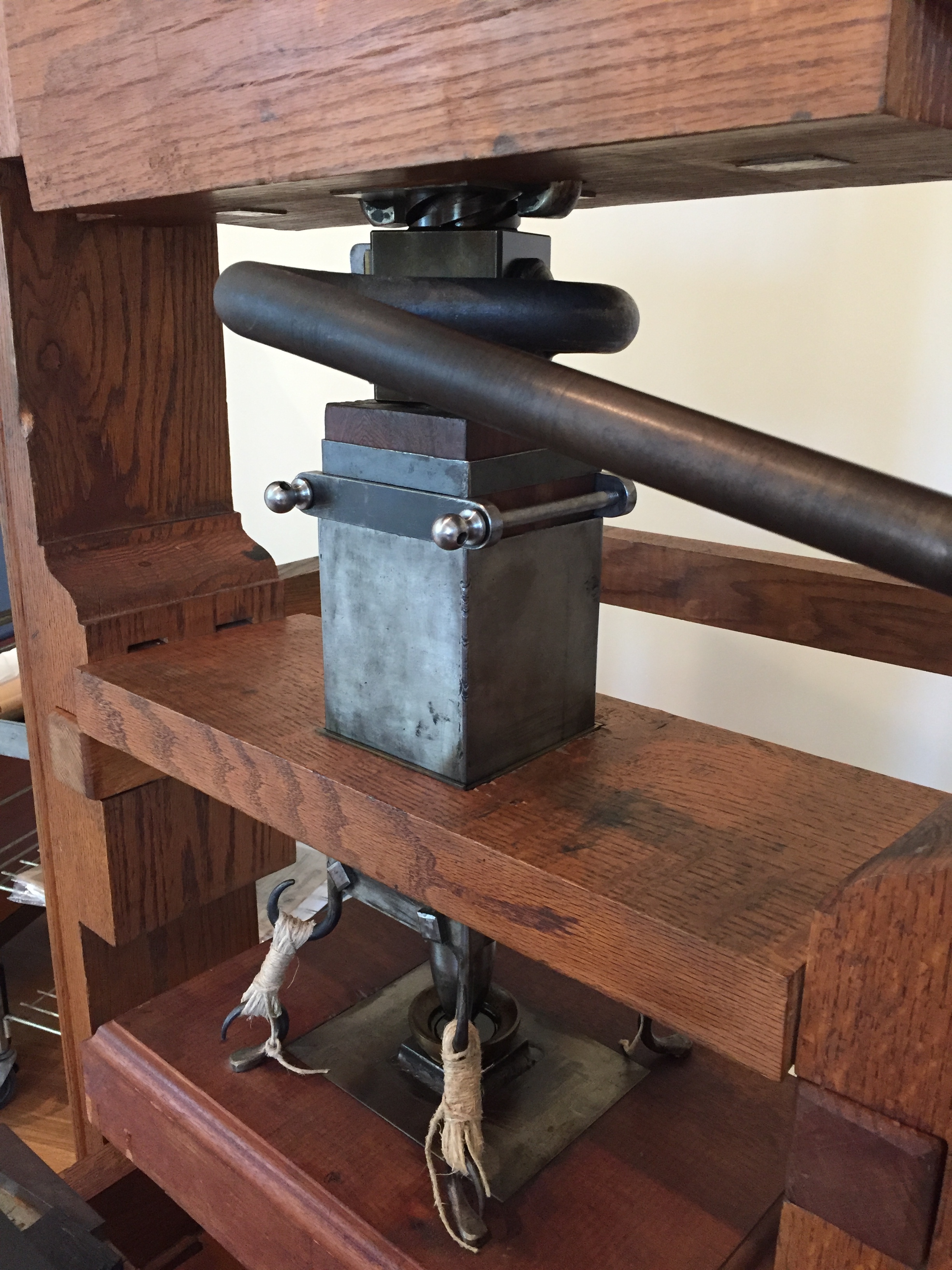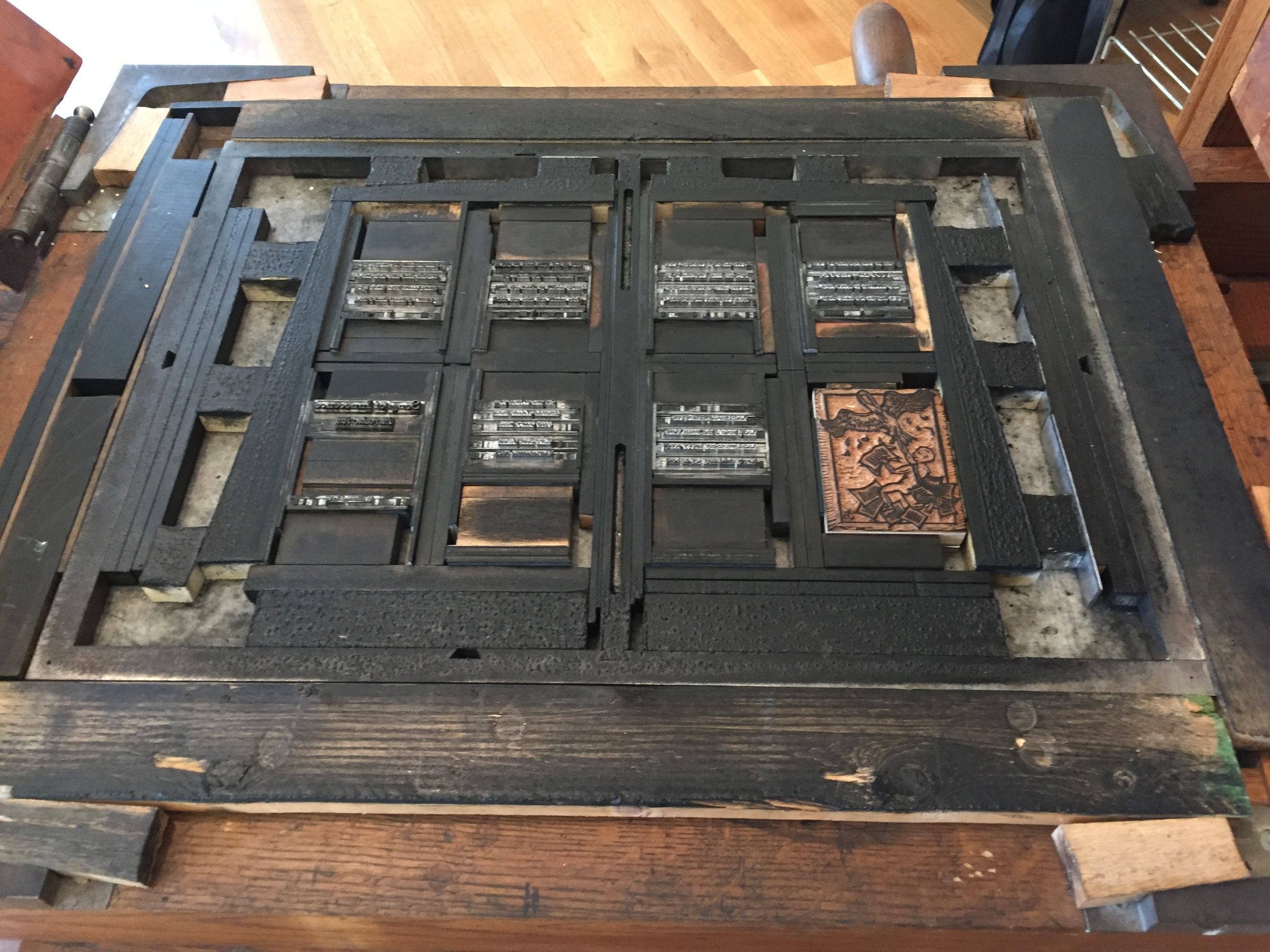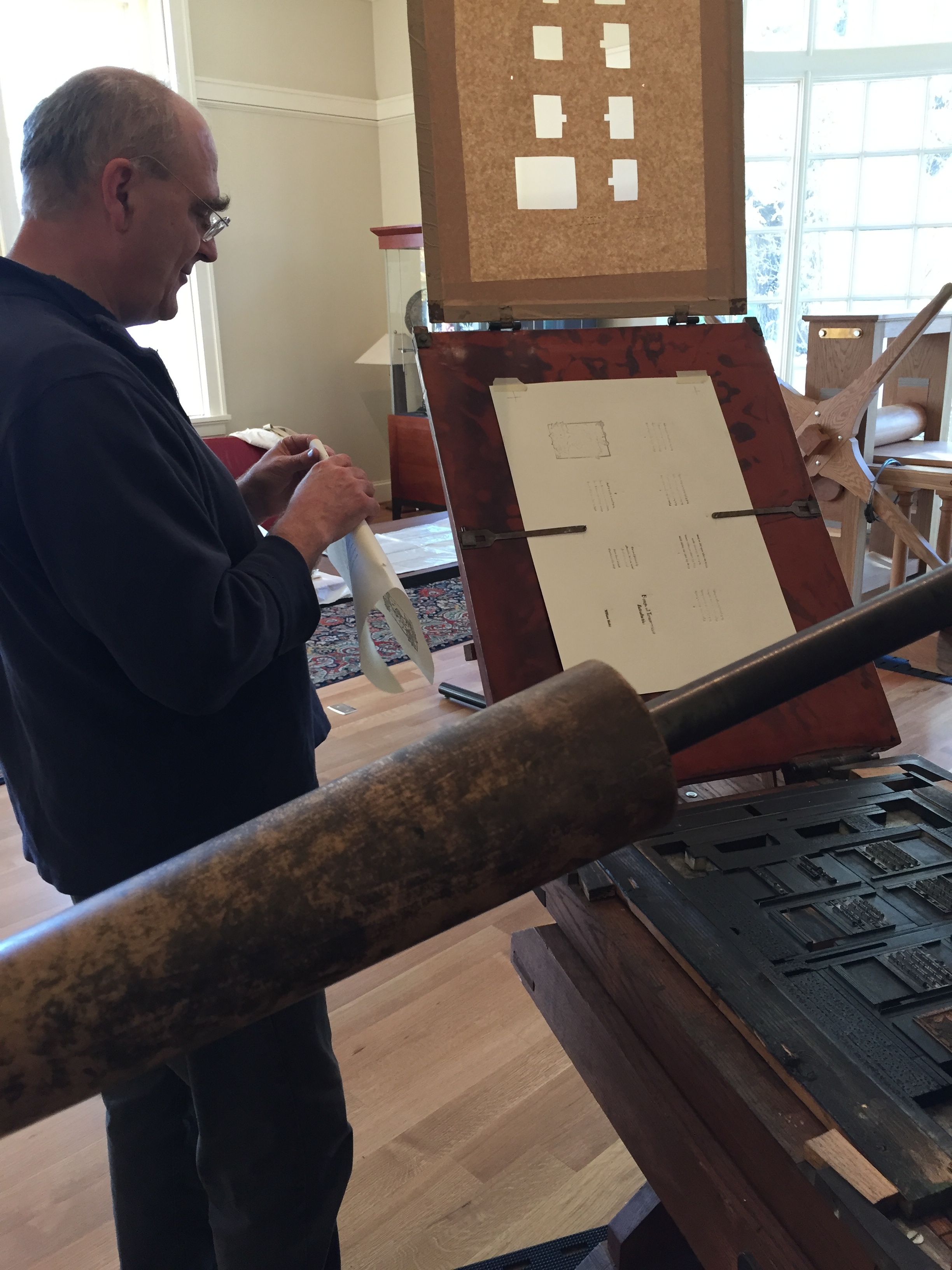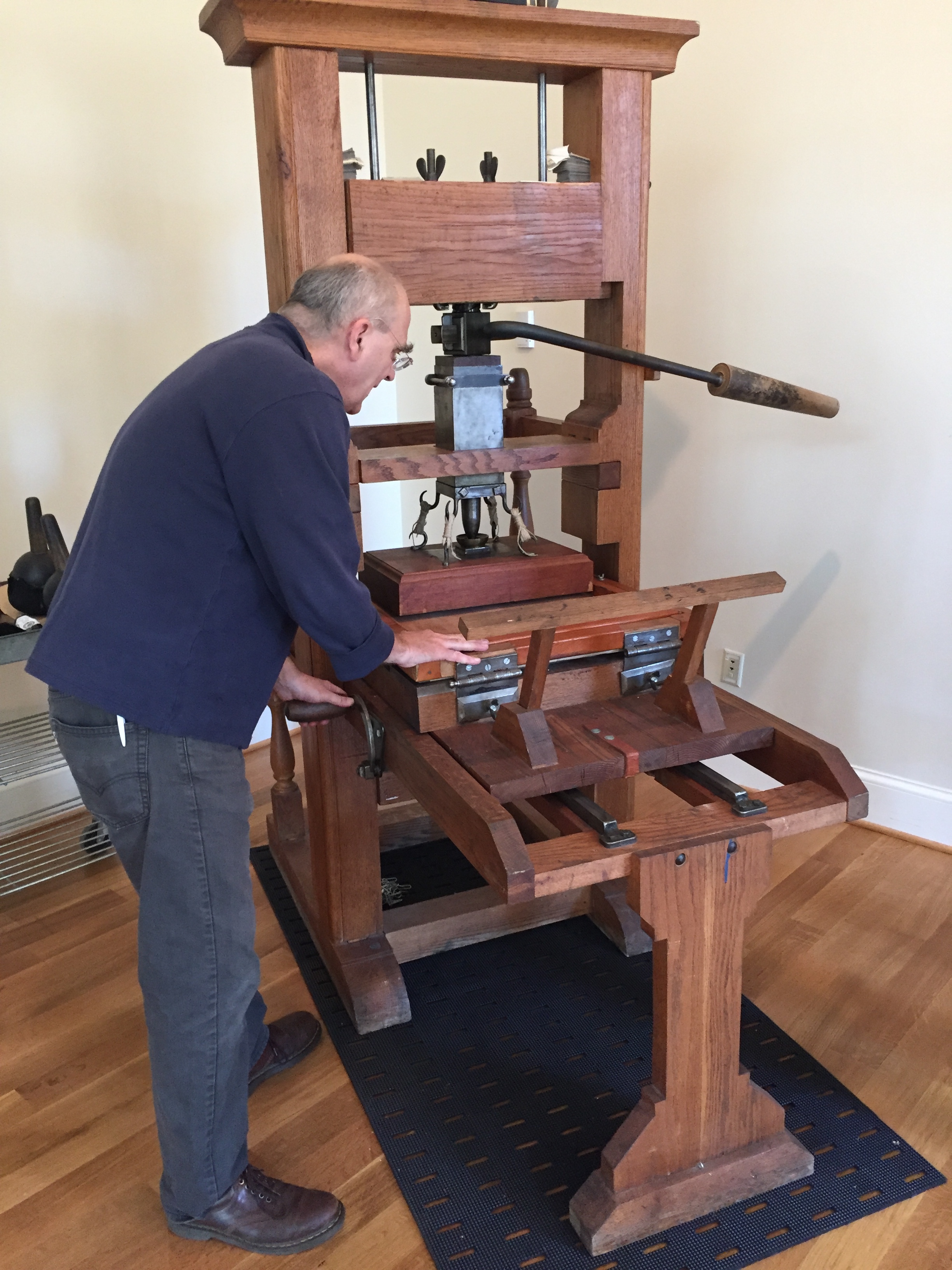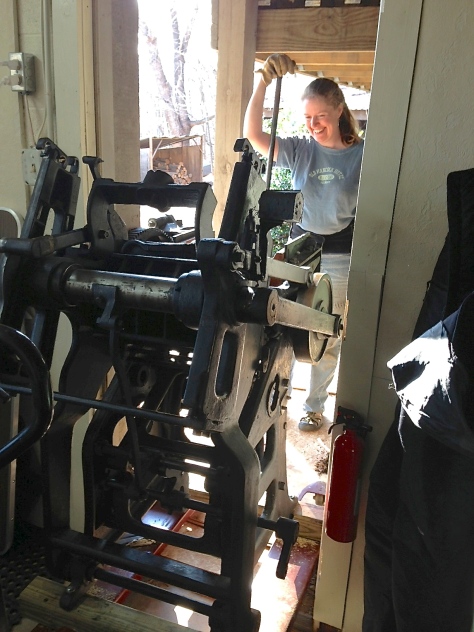Hello, Friends of the Press,
Sometimes, things break. Whether through long-use, misuse, abuse or neglect, or just plain time and tiredness. Last week a small-but-critical part on the 111-year-old cast-iron Golding Pearl press finally gave out: the chase clamp, which holds the chase (a metal frame which holds the type) in place against the press bed.
Circled in this photo is the chase clamp. With the aid of a spring, it pivots on a small metal pin, clamping the chase to the press bed.
Here you can see the chase clamp break ~ snapped in two right at the pin. Unfortunate, but not uncommon for these old pieces of cast-iron.
Sometimes, things can be fixed. I took the part over to a local welder to see if his expertise and tools could repair it. With a mixture of carefulness and long-experience, Stuart was able to bring the clamp back into working order, TIG welding the break with very hard nickel and then polishing it smooth. Thank you, Stuart!
You can see the bead of nickel where the part was welded back together. It now pivots easily around the pin. (You can also see a decades-earlier weld at the left-hand tip of the clamp.)
The next day, I reinstalled the clamp and inked the press up for a test drive. The part did its job perfectly, and I went on to print about 500 pages that afternoon!
Linji the shop dog was, as usual, unimpressed ;-)
It feels like there are some big things that are broken in our nation and world right now, and so many people are hurting. There are no easy fixes. The pandemic, centuries of racism and injustice, economic upheaval, and environmental degradation, are turning lives and livelihoods upside down. The suffering is real and deep. Our hearts and minds and hands must work with great carefulness and great courage to fully see, and compassionately meet, the needs of this moment, the needs of our brothers, sisters, and planet.
To help spread words of care and concern, solidarity and urgency, we are continuing to expand our line of The People's Postcards. This week, we debut declarations of Healthcare For All!





Like the Black Lives Matter postcards, these are pre-stamped ~ it's easy to pen a short note to your elected representatives and pop the card right in the mail.
The details:
Letterpress printed with antique wood type.
USPS postcard size 6" x 4.25"
Pre-stamped / postage-paid.
Packs of 10 ($10) and 25 ($25).
Proceeds donated to The Poor People's Campaign.
However you choose to join in, thank you all for your efforts towards a more just, loving, and equitable world. We're all in this together.
With gratitude,
Emily
Emily Hancock
St Brigid Press
Afton, Virginia



